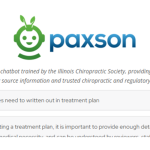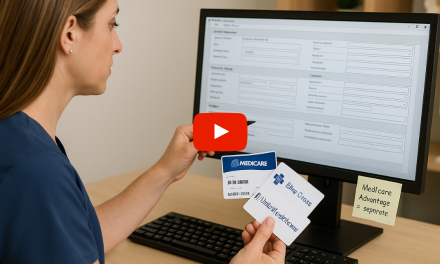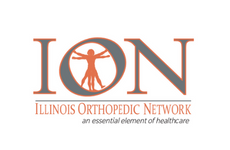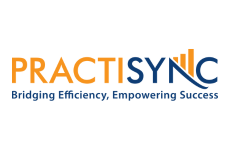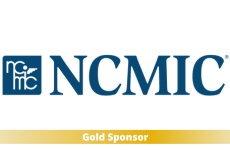
Diagnosis Coding Mistakes That Delay Payments
Brandy Brimhall reveals how clean diagnosis coding and accurate claim alignment can boost reimbursements, reduce denials, and protect your practice from costly billing errors and audit risks.
Referenced Links:
Diagnosis Pointing
Excludes1 Info and Cheat Sheet
Paxson (ICS Member Only AI)
More about Practisync
Transcript:
Marc:
So Brandy Brimhall with Practisync, has joined us again to talk about some billing challenges and correcting some of the things upstream, correcting things at the beginning of that patient cycle to improve reimbursement, to improve collections, to improve the possibilities of insurance companies doing their job and paying you for the services that you render. We’ve talked a bunch over the last over a month now of things that we’ve addressed with Brandy, but we have talked a lot about diagnosis codes. And I know that anytime I bring up diagnosis code pointing and things like this. These are the things that I think my doctors want to strangle me over, because we talked about them a lot. But from your perspective, when you’re doing the billing, day in and day out for 10 for a lot of different offices, for millions of dollars in collections a year, what do you see with diagnosis codes on that front side?
Brandy:
Sure, so a couple of things related to diagnosis, I think it’s important to know the why always matters, right? And so our procedure codes, our CPT, and hick pick say this is what we’re doing. Our diagnosis codes say this is why I’m doing it. So that is part of how we not only complete documentation and complete a claim, but that’s how we communicate to our third-party payers. The reason I have performed this service is because of these symptoms or conditions. We’re telling part of a story, so the cleaner we can tell that story, helps us to get paid better, helps us to minimize our risk of audits, recruitments, records requests, and all of those things. It’s never going to go away. But a lot of times, I mean, I would consider it a controllable error. A lot of the times, that we have challenges with third-party payers are because of things we communicate in our claim forms that we don’t realize we’re communicating. So procedure code says what you’re doing. The diagnosis code says why. And of course, our modifiers give that additional information that isn’t otherwise able to be communicated, that’s necessary to communicate with the procedure codes. So clean coding is important. Just narrowing it down to the diagnosis aspect, there are a few things that commonly happen that are disruptive to claims, billing, claims processing, and reimbursement. One of them is using those excluded or excludes one is what it’s called, and it’s diagnoses that aren’t able to be used together on the claim. In other words…
Marc:
Real quick, I hate that terminology. I just thought I’d say that the excludes one, it really doesn’t tell us anything. But I tell our doctors all the time, think of excludes one, of just meaning or saying, instead of excludes one, it’s going to be don’t build these together. So anyway, sorry, go ahead.
Brandy:
Yep, no, that’s perfect, and that’s exactly what it means. It means don’t build those together. So it should be in your documentation, but they shouldn’t be present together on the claim. What typically happens is we either get a denial, it’s usually the CO 16 saying something on the claim is invalid, or rejection, saying something on the claim is invalid. I have them all the time, where clinics will say Brandy, I checked all of the diagnoses. They’re all valid and active diagnoses. The payers messing up. What I will go through and do is then check every diagnosis to see if they’re excluded, not able to be used together on the same claim. And almost every time, I can find two or more diagnoses that aren’t eligible to be present on the claim together. So that’s important to keep in mind, something to always double check before just assuming that the payer has made a mistake in rejecting or denying a claim. So those invalid diagnoses are another diagnosing…
Marc:
Real quick, on that just for our members, one of the things that we’re really working on with our internal or our closed system AI Paxson is we’re training her on this. And so we would challenge you to go ahead, you can even test her and try her out, have a conversation and tell her all of the diagnosis codes that you have on a specific claim, and ask her if any of them, if she notices any of them having a an excludes one as our as our training continues to improve over time with her, we believe that eventually our AI is going to be able to tell you when you have that excludes one, and maybe a fast way for you to be able to check it. Do not put patient information in that is not HIPAA compliant. I want to make sure and emphasize that, by the way, unless you have HIPAA-compliant AI, you should not be feeding it patient information in any way, shape, or form, but you can take just the diagnosis codes if you’re thinking, is this, is this why it’s being rejected? That’s one way that you could potentially check. And we also have a great article out there that has kind of a cheat sheet on common diagnosis codes that we find in our practices that ultimately result in excludes one rejection. So that’s another quick tool, but I’m sorry I jumped in.
Brandy:
No, that’s perfect. So you know, just to carry on with the diagnosis, a couple of the other challenges that I run into on a regular basis with clinics and their diagnosing, one of them is using invalid diagnoses. So remember, diagnoses are updated October 1 every new year, and if we’re still using the old diagnosis from October 1 moving forward, we’re going to see rejections for an invalid diagnosis. One of the things that continues to feed that challenge is we may not inactivate those diagnosis in our software or docs are really, really good at doing the salt the same as last time in their notes, which continues to pull those old and invalid diagnosis over into new visits, essentially just continuing to add debris into the revenue cycle system pushing those claims out to reject and someone is there spinning their wheels to clean them up. So make sure when you have the new updated diagnosis, you make the the old ones inactive in your software and be extra careful on the same as last time visit, from one visit to the next with your patients, because you’re pulling that old data, which may not always, in fact, often it isn’t because October 1 through about December 31 every single year, I spend a lot of time cleaning up diagnosis that really should be not present in the system anymore because they’re invalid. So that’s another one.
The other one that I would bring to your attention is laterality, if you have TMJ or if you have sciatica, right or left or bilateral, whatever that might be, it needs to be present in your documentation, because, remember, your documentation is what determines your coding, but you need to make sure to document properly for laterality, or that will cause some rejections and denial related issues as well. So all those things are important. And then, of course, some of our payers have diagnosing rules, as far as the order of the diagnosis. Be aware of that, if that’s the case for some of the payers that you’re billing for, and otherwise, you know just doing your due diligence, attention to detail, making sure that the diagnoses are applicable.
The last one I would probably mention, would be diagnosing outside of our scope of practice will result in records requests and denials for you. So with those patients with underlying conditions always have that present in your documentation, but those underlying conditions typically won’t translate into the diagnosis on the claim form, because that indicates that you’re treating the patient for these other conditions that would be outside the scope of practice, so that one happens less, but certainly happens on a regular basis. And definitely something I think is worth sharing.
Marc:
Something you touched on really early in this conversation is is you explained the differences in the codes and CPT Hicks picks, is what you’re doing, and the diagnosis codes or the ICD-10s, or why you’re doing it. Diagnosis pointing is also super important, right? You want to get that right. What you don’t want to do is indicate I’m treating this ankle because of the shoulder pain and what I have seen, at least, and helping our members. And I’m sure you see this a whole lot more than I do on a day-in and day-out basis is at the end of the day, what you don’t want to do is do a through d, and D is, you know, a shoulder diagnosis, right? But you then append that to, you know, an ankle treatment, if you will, or an ankle CPT or or whatever the case might be. You want to make sure that your diagnosis codes align with the treatment that they’re next to. But you see that a whole lot more than I do, I’m sure.
Brandy:
Yeah, so for every procedure that you submit for, you’re obligated to assign the appropriate and applicable diagnosis that pertains to that procedure. Remember, that’s part of supporting medical necessity. And if you reference our claim forms, you can see, you know, line item 123, and so on, that has the procedure code, the modifier, and then the diagnosis pointing. And so you’re literally saying, I’m performing this procedure because of these symptoms and conditions. And so it’s important to make sure we are diagnosis pointing, because it tells a clear story. So if you were reading a novel and you were just sort of left to sort of decipher what part of the novel goes with which parts of the, you know, the characters in the setting, it’s going to be very confusing. If we’re not pointing our diagnosis codes, then we’re giving a very scrambled story to our third-party payers.
Again, we communicate more in our claim forms than what we realize. One of the things in this particular case that we’re communicating is perhaps we’re not following the coding guidelines, perhaps one or more of the procedures that we’re performing and expecting consideration for coverage and reimbursement isn’t medically necessary because it wasn’t properly represented. What you’ll see in your remittances that come back, because, remember, everything comes back in the end, is individual single-line item denials. And so they may pay or allow multiple procedures, but one or more procedures will deny, sometimes for lack of medical necessity, sometimes for records, sometimes for, you know, for various of different reasons along those lines. But if we’re pointing our diagnosis, though, we can’t prevent that entirely. We can most definitely minimize it just by telling a clean story, by using the proper procedure codes and diagnosis pointing appropriately.
Marc:
I also want to point out, I think this is this is important in regards to diagnosis pointing, is it also helps clarify when a payer has a very specific medical policy for what is considered medical necessity. And so you very well may have in your documentation exactly the right things to be able to justify the medical necessity according to a payer’s medical policy, but then you’ll do an A through D inside of the diagnosis pointing, and maybe the actual appropriate diagnosis for that specific CPT code. We see this. I see this a lot with questions that come in, in regard to, say, orthotics, there’s a specific regimen that has to be done, or very specific conditions that they will allow for. And when you put a through d, it’s an easy denial by the insurance companies, because what you’re saying is, this is the service that I need to be reimbursed for. Here’s the orthotic as an example. And then you’re giving these diagnosis codes that don’t align with their medical policy. Again, those are easy denials by the insurer, and so get your diagnosis code pointing nailed down, and you’ll find a better stream of payment coming from the insurers, or at least remove their arguments that they have when they do deny inappropriately.
Brandy:
Absolutely, I really do think because our documentation is the foundation of everything, and then our documentation and our claim forms are the same story, or supposed to be the same story, just in a different language. It’s just that simple. And so we translate documentation into coding. So we find ourselves really crippling ourselves by just not telling that story in a clean and compliant manner. And again, we, you know, like I mentioned it all the time, but we really do communicate so much more in our claim forms than what we realize, and by just paying attention to the detail on those types of things, we can save ourselves a lot of agony that we do have with our third party payers. So definitely making sure our diagnosis pointing is properly in place going to be instrumental to us.
One of the things that happens in chiropractic, and there are a lot of them, really, but one of the most common ones, remember our 9894041, and four, two are most commonly billed procedure codes that we have in chiropractic. I see all the time we are billing 98941, but there are only two spinal diagnosis one or two spinal diagnoses on the claim. So this is immediately an example of your documentation and claim form, not telling the same story, and improper coding. A payer isn’t going to say, Okay, we’ll just when we audit you, we’ll just reimburse ourselves, so we’ll recoup the difference between the two procedure codes that is fraudulent and non-compliant billing. They’re going to recoup everything, and so important to just, you know, again, tell the follow the coding guidelines, tell the appropriate story. Translating your documentation into code, your documentation is going to either be your saving grace or it’s going to open a can of worms for you. And payers love to in the old days, they used to request records all the time. Now they’ve gotten smarter, and what they do is they kick the can back to us. They’ll still request records, but otherwise they’ll give us these other denials for individual line items or entire claims, and that’s them saying, now it’s in your court. You prove that this is reimbursable. And a lot of times, we find ourselves in the position that we simply can’t. And so certainly this is one of the areas to focus on to help minimize that from occurring.
Marc:
Yeah, I again, I think our doctors have heard me preach about diagnosis pointing a lot, and that’s just one of the facets that you talk to us about today. Thank you so much for joining us today. Brandy. Check out more information about practicing. I’ll drop a link down below, and we’ll catch you next week.



